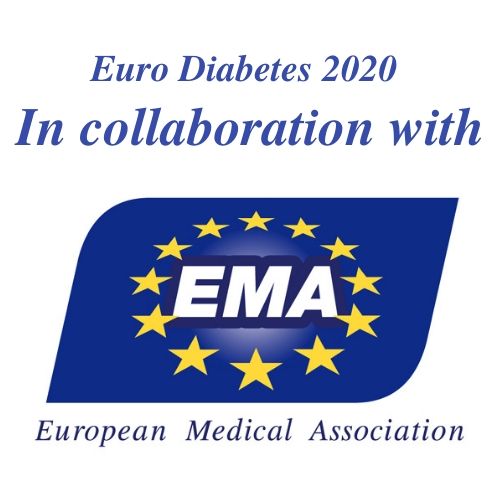Huabin Wang
Jinhua Municipal Central Hospital, China
Title: Urinary orosomucoid 1 protein to creatinine ratio as a potential biomarker for early screening of kidney impairment in type-2 diabetes patients
Biography
Biography: Huabin Wang
Abstract
Early screening of diabetic kidney disease (DKD) remains a major challenge. Our aim was to evaluate the value of urinary orosomucoid 1 protein (UORM1) in early renal impairment screening in type-2 diabetes patients. Methods: The concentration of UORM1, the UORM1-to-creatinine ratio (UORM1CR), the urinary albumin-to-creatinine ratio (ACR), the alpha-1-microglobulin-to-creatinine ratio (A1MCR), and eGFR were measured in 406 type-2 diabetes patients. Any positive values for ACR, A1MCR, and/or eGFR were considered as indicative of renal impairment. Results: On average, the levels of UORM1 and UORM1CR were about 7-times higher in subjects with renal injury than in those without. Both UORM1 and UORM1CR, when adjusted via logarithm-transformation, were significantly related to ACR, A1MCR, and eGFR levels. The highest correlation was observed between UORM1CR and A1MCR (r = 0.85, P < 0.001). The cut-off values for UORM1 (2.53 mg/L) and UORM1CR (3.69 mg/g) for the early diagnosis of kidney impairment were obtained from receiver operating characteristic curves. UORM1CR obviously had higher diagnostic efficiency corresponding to 83.26% sensitivity and 90.32% specificity than UORM1. Likewise, its sensitivity was higher than those of ACR, A1MCR and eGFR. Bad glycemic control had the highest risk of increased UORM1CR (odds ratio (OR) = 2.81, P < 0.001), while high HDL-C (high-density lipoprotein cholesterol) decreased the risk of increased UORM1CR. Conclusion: UORM1CR (> 3.69 mg/g) has the high diagnostic efficiency for the early screening of renal impairment in type-2 diabetes patients. Furthermore, good glycemic control and high HDL-C might be protective factors against UORM1CR increase

